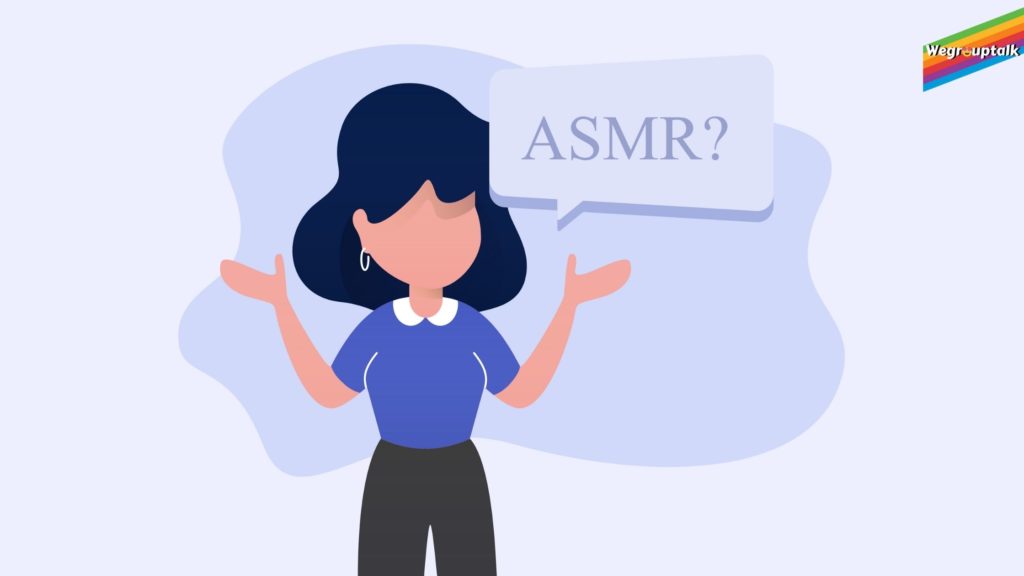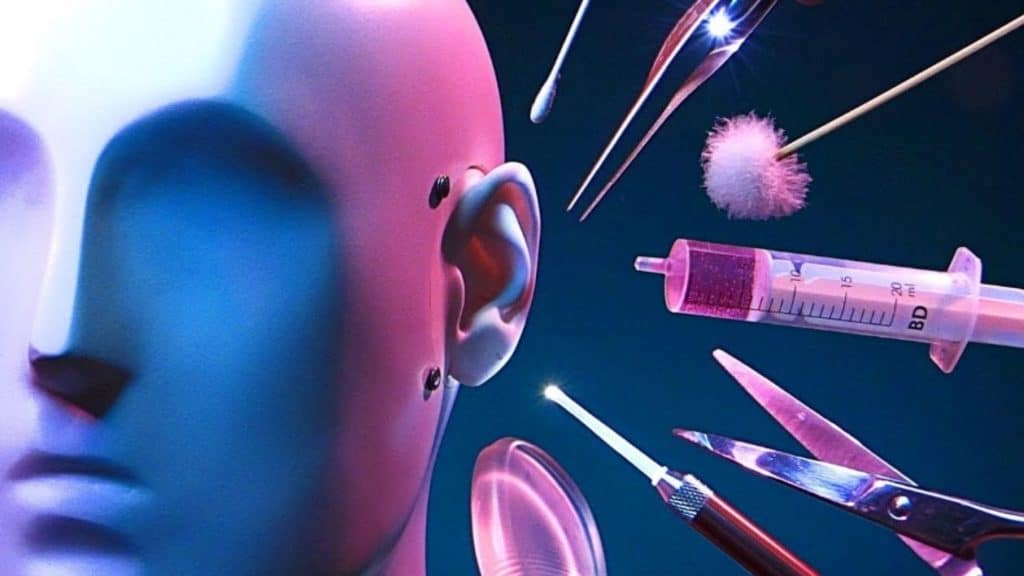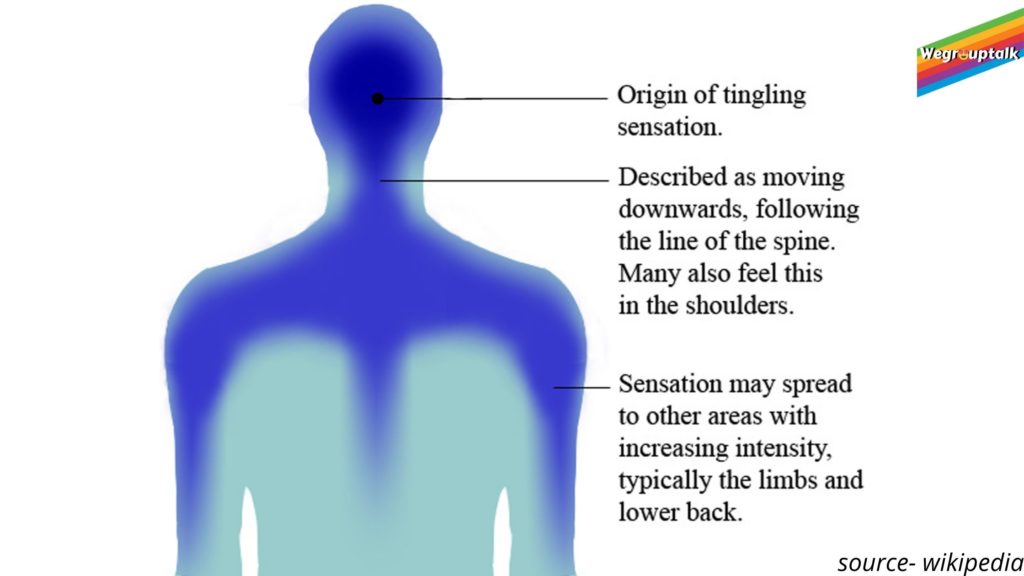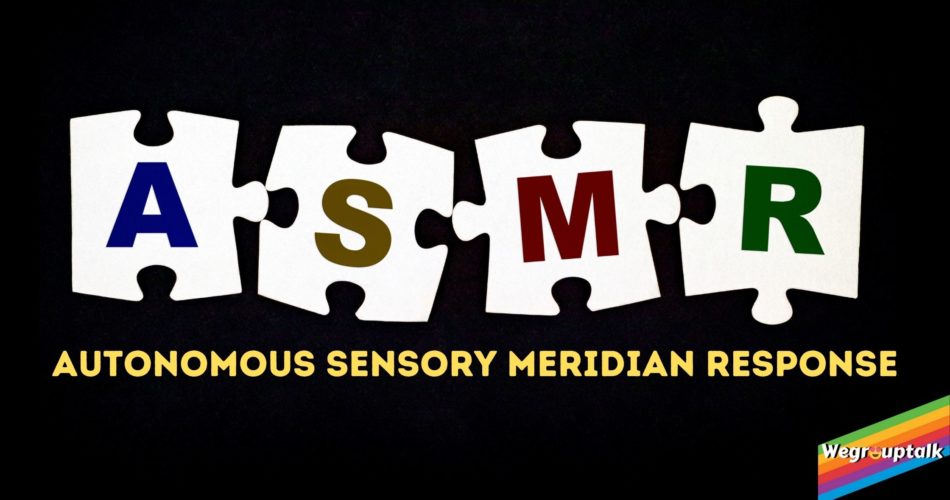“There is more to life than increasing its speed.–Mahatma Gandhi”
A quote that has become a reality in this decade for most of our generation! Any person of our generation knows what slow means, and yet they experience it vividly and inevitably when they’re racing against their colleagues, peers. With such rush becoming the new facet of our society, the question that eats away at everyone is “how do we slow down without falling behind? How do we attain calmness around this madness?”
The answer to that my dear readers is simple! Delicate, soft tingly sounds that snapped you into surreality! And it’s called none other than ASMR!

What is ASMR?
ASMR or Autonomous/Auto Sensory Meridian Response is a term that defines the tingling sensation that flows like a current from your scalp down to the back of your neck and upper spine similar to that of frisson. It has been compared with “auditory, tactile synesthesia” which is nothing but a simulation of one sensory or cognitive pathway leading to involuntary experiences in the secondary sensory or cognitive pathway.
History of ASMR
The term is believed to be coined in 2010 by Jennifer Allen who was dedicated to finding why certain calm sounds felt euphoric to her. She started a Facebook group to research and experiment with like-minded people. The term was coined “Autonomous Sensory Meridian Response” as she wanted it to sound more scientific and technical as opposed to the temporary names that were associated with brain orgasm. The terms used in ASMR refer to following characteristics of ASMR:
- Autonomous:– spontaneous, self-governing, with or without control
- Sensory:– about the senses or sensation
- Meridian:- signifying a peak, climax, or point of highest development
- Response:- referring to an experience triggered by something external or internal
The earliest videos that can be traced back to the beginning of ASMR used what we now know as binaural sounds which essentially meant that you could feel the voices around you. ASMRtists is a term that is used to define an ASMR artist.
Let’s talk about 12 common ASMR triggers
- Whispering
- Tapping sounds
- Physical Tough (simulating hair playing or face touching)
- Personal attention (this includes a person talking to you)
- Light triggers.
- Roleplay (personalized and engaging experiences for viewers)
- Crinkling
- Message sounds
- Sounds of page-turning.
- Visual triggers such as beautiful cinematography

One of the most famous ASMRtists, Maria, which has one of the most viewed ASMR channels called “GentleWhisperingASMR” discovered this sensation during her childhood. When she set out to find out more about it, ASMR already had a well-established community, and as we all know now today, it has only grown larger and larger.
“Latte ASMR” is considered to be the queen of ASMR as not only just high-quality binaural sounds but also beautiful visual triggers are also what’s comforting about her videos.
“Atmosphere” is a wonderful channel that has these beautiful ASMR videos which have such high cinematography. Her video quality could be compared to that of a movie director. She creates roleplay and visual ASMR that are adventurous.
Is it a dying or a growing trend?
While many ASMR channels have reported less view count but that may be factored into so many new channels popping up. What used to be a creator community dominated by some is now a community everybody wants to be a part of. It has become a new way for fast money (relatively) for some creators(to be clear: I’m not judging them). All creators have something unique and their signature style.
For example, Latte ASMR makes her own sets, and Rapunzel ASMR has beautiful sounds, Latrice ASMR has one of the best scalp and hair play sounds, Atmosphere took ASMR to the level of high-quality cinema. Some are fast-paced, some are slow-paced, some are highly realistic, some are highly creative. It could be easily argued that ASMR is not a drying trend; in fact, it is growing day by day.

Why is it so appealing?
The reason for its charm and appeal hides behind the fact that it is famous for its ability to help people sleep/or relieve stress.
Let’s discuss the RESEARCH BEHIND IT!
Since ASMR is a relatively new phenomenon, it has a lot of ongoing research on it. Several peer-reviewed articles have been published about ASMR. Physician Nitin Ahuja published the first one in 2013 in “Perspectives in Biology and Medicine” was focused on “conjectural cultural and literary analysis”.
An article published in 2014 by Joceline Anderson (doctoral student in the Department of Art History and Communication Studies at McGill University), suggested that ASMR videos (specifically those which consisted of whispering) create an intimate sonic space which is shared by the listener and whisperer and creator and viewer jointly share the pleasure as non-standard intimacy. In other words, a form of pleasure mediated through video media.
Nick Davis wrote an article, and Emma Barrat (lecturer and post-graduate researcher ) of Department of Psychology at Swansea University conducted a study on 245 men,222 women and eight individual of non-binary gender, aged from 18-54 years all of whom were regular consumers of ASMR. They concluded that ASMR was linked to the improvement of mood and pain symptoms. According to them, it could be used as a potential therapeutic measure like meditation.
In September 2018, the first study based on fMRI brain activity on ASMR was published in ‘BioImpacts’.Subjects were shown several ASMR videos with headphones and screen while inside the MRI scanner. Significant differences in brain activation were reported as compared when the issue was tingling than that of that when they were not. They concluded that brain regions which were most active during the tingling were nucleus accumbens, mPFC, insula and secondary somatosensory cortex which suggested that it was similar to experiences like social bonding musical frisson.

In 2019, an fMRI study reported that ASMR produced activity in brain areas related to sensation, emotion and attention, including the right cingulate gyrus and cortical regions related to audition, movement, and vision such as the right paracentral lobule and bilateral thalamus as compared to the subjects without ASMR experiences who showed greater activity in the lingula and culmen of the cerebellum.
So, GOOD or BAD?
It is imperative to understand that ASMR has no reliable scientific backup as it has come to highlight only in recent years. All the advantages and disadvantages mentioned here are merely speculations.
- It may help reduce anxiety, depressive episodes, or panic attacks.
- It may calm you down when dealing with a crisis.
- It distracts you from ongoing events in life and helps you focus, relax.
- It may help you sleep.
- Visual triggers aspect of ASMR may help stimulate your brain.
- It may prove to be addictive and maybe a high dopamine activity which is harmful in the long run.
- It may become hard to do any work without having ASMR in the background.
- Some visual/sound triggers may end up triggering an attack. For, e.g., repetitive light stimuli might trigger epilepsy.
- Hypnosis ASMR could easily be used to brainwash people.
While ASMR could help relieve stress, it could quickly become a tool for people to manipulate and brainwash people. The biggest downside of ASMR is once you watch it, the more you crave it. The addictiveness of ASMR, while just speculation, would do more harm than it does good.
PERSONAL EXPERIENCE
Note: This article is an opinion and not the absolute truth about ASMR.
I started watching ASMR in 2019 accidentally through Sabrina Carpenter’s video which I mistook for a music video. Since then, I have been watching and listening to ASMR almost every day. It has helped me relax, relieve stress and has helped me sleep. I had even used ASMR as ‘background music’ when I studied, which I thought would increase my concentration but let me tell you, it only slowed me down.
The one thing I’ve noticed about ASMR is while it is absolutely helpful in letting you control your emotions, it will slow you down if you use it during the activity. I had done a more effective study when I wasn’t listening to ASMR. However, this could be just limited to me. It is better just to use instrumental music. I watch ASMR every night, and I drift off to sleep, the dependency on ASMR in my life may be good or bad, that I don’t know but to everyone who’s reading this, limit the time you spend on ASMR.
To any reader who has not yet experienced ASMR, I wish that you let it stay that way because it has an addictive charm which is extremely hard to get over. If you’re looking to focus and relax yourself, let yourself meditate and listen to instrumental music.
With this, I conclude my article and encourage you to make healthy and smart choices. Stay safe and healthy!
Follow us on FACEBOOK, INSTAGRAM and TWITTER to stay connected~!!
Also Read- What is Dementia and its symptoms?




